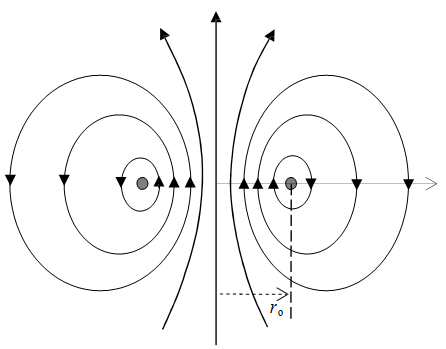Shamangineer, Ether Ormus
This post is just a theory I've come up with.
Santos Bonacci refers to ether but in a different way. In the ether model, the substance that makes up the universe is split into 3-4 different categories where as with the model that Santos Bonacci uses, everything is made of light but only at different frequencies. Also, the light is separated into two types, lux and lumen. Lux is explained as divine, white light because it's unconditioned and can turn into the lesser light (the matter that makes up the 3 dimensional world). Either way, both models have to agree on a base substance that makes up the entire universe.
Ormus reminds me of the philosopher stone mentioned in The book of Aquarius. The way they are made differs though. The philosopher stone is made by distilling the life source out of urine, and then letting it ferment with gold or silver (Gold for the red stone and silver for the white). The process is more complicated than that but both Ormus and the philosopher stone seem to hold great reserves of energy that we do not know the nature of. They also have many effects in common. Both have extreme healing prowess, raise the mind to higher levels and transmute lesser materials into gold.
The way Ormus disappears in sunlight interest me too. What if the reason behind its' dissappearence is due to its nature of being the closest substance to pure lux/ether and thus it wants to return to the purest form from whence it came. What would happen if you could reverse this process and reach into the realm of lux/ether and condition it into any substance you wanted.
Imagine what would happen if you had access to the material that makes up all the universe (lux/ether), the energy supply and conduit of this material (Ormus/philosopher stone), and the perfect tool for creation (a highly aware and powerful human mind/pineal gland). I think the result would look something like this.
https://m.youtube.com/watch?v=BSCzG2Hf3gk
I know it's just a game but the video is a good visual of how it might work.
Instant manifestation of any material would be an every day thing through the excitation of lux/ether. Teleportation would also be easy in theory. I realize that the theory is highly speculative and needs some fine tuning, but what if it worked. Please feel free to add onto the theory or help brainstorm.
Re Urine & philosophers stone: I have heard that this process is the reason that the Order of the Golden Dawn has it's name (collecting the first mornings urine for use in alchemy) which also ties in with the bion experiments of Reich as well. Please post a link of the video, I cannot see it.
I don't think a link will show up because I posted it in the last message but if you can find on YouTube. It's called Noctis hidden power.
Is the crystal shard thing what you are talking about?
[attachment file=5028]
The vortex model of kelvin doesn't seem hard to apply at a high level, but the details are not resolved. The typical particles we experience and measure can be correlated to the prime knots, and more complex tangles could accommodate the unstable particle zoo. There are many heretical implications to such a model, which might be fun to go into.
Fun fact: the vortex model suggests that there is no such thing as an anti neutron. See how many papers show experimental data about them since Bruce corks 1956 paper....
I'm talking about the way he can pull blades out of the ether and even move his body into the ether to avoid attacks and teleport. It also seems like it has something to do with light.
By anti neutron, do mean the base material of the universe I'm referring to?
Sequoia:
Yes, what you are discussing does factor into the Ether model, I can't remember where I heard it but I have heard things similar to that discussed when talking about ancient battles with highly trained spiritual warriors. They were often attempting to "cut the thread" (for those familiar with out of body reports) of the opponent in the etheric realm. They could theoretically form a kind of psi-blade out of zero-point fluctuations creating a plasma and would also be capable of forming physical weapons at a greater cost of chi. But frankly when you have a light saber and it takes more energy to create a regular saber, you would choose the light saber every time right? Besides it would be a lot easier to just carry a regular saber.
On a related note, I think that most ghostly apparitions are a kind of zero-point plasma manifested by a sort of morphogenic or auric imprint left by highly charged emotion and that interdimensional entities also manifest this way either as a plasma apparition or a physical manifestation.
Etherdias:
I am not sure why you think that an ether model would suggest no antineutron. Please see Thomas G. Lang's model below, in this model antimatter is the opposite spin of regular matter and would simply be in the clockwise spin of Ether which would annihilate when meeting a counter-clockwise spin of regular matter.
[attachment file=5044]
Unified Fluid Dynamic Theory of Physics Dr. Thomas G. Lang Presented at: Natural Philosophy Alliance, Conference #19 Albuquerque, New Mexico July 26, 2012.
There are many models of the Ether some with higher-dimensional ether models like that of Paul A. Laviolette's as well: He discusses his model of the antineutron on page 9 of the paper.
[attachment file=5045]
Here are some computer simulation videos of his regarding the formation of subatomic particles from the zero point:
http://starburstfound.org/simulations/archive.html
The ghostly energy and psi blade energy seems to be between both the worlds of lux and lumen. Maybe that's way it appears translucent.
So, to hit on a point I made in the other thread, I think we have to be skeptical of some of the concepts considered to be dogma now, or at least skeptical of the way in which they have been applied, particularly since WWII. I don't dispute that anti-matter exists, but I think we should be skeptical of the idea that every particle has a corresponding anti particle. The standard model appears to bend this rule as well, given that some members of the particle zoo are already 'their own antiparticle'. See here: https://en.wikipedia.org/wiki/List_of_mesons
You'll note that it's not clear how much of that table is useful data and how much is gobbledygook, by its own admission. Even simple bubble chamber experiments show positrons, and certainly there are a variety of antiparticles, but I don't think the anti-neutron holds water, and I think that Kelvin's model basically predicts this. (It seems somewhat odd that no one in the literature of the 50s-70s bothered to consider his rationale reapplied to the particle zoo, but I digress) Let me elaborate.
There are a few folks out there who have been kicking around some application of Kelvin's insights for some time. Williamson and van Der Mark's paper "Is the electron a photon with toroidal topology?" (here http://home.claranet.nl/users/benschop/electron.pdf) perhaps gives an approach, or at least a basic concept, for what might constitute an electron model within a vortex ether theory like Kelvin's. The proton has been contemplated by John Duffield and Jack Avrin, neither of whom have strong theoretical backgrounds, but both give an attempt to link the trefoil knot with the proton in some way. the simple ring then looks like a construct which is applicable to photons moreso than the other particles. It makes sense if one considers that the types of polarization which photons possess can correspond to the projections of a ring onto the direction of travel of the photon. How you incorporate the wavelength/energy is not clear. Sometimes a debroglie-like model makes sense, others (like Duffield) suggest that you have something like a single pulse rather than a proper wave train. Either one is preferrable to the current 'plane wave photon' model (like this  ) by quantifying it and not assuming an infinite wave train from source to target.
) by quantifying it and not assuming an infinite wave train from source to target.
It then seems that some version of the prime knots which topologists have identified can be correlated to the more stable particles we observe (photons, electrons, protons), Duffield seems to think that a distorted trefoil explains the neutron. I'm more inclined to think that the figure-8 knot better describes the neutron (perhaps like this: https://youtu.be/uUD-LHK8mRg?t=17m44s), and that the assumption of 3 'quarks' or 'partons' in a neutron was a goof or deliberate misstep. In particular, I think Cork's work can be ascribed to error rather than malfeasance. He deduced the anti neutron by measuring decay in a chamber which had been shielded to prevent charged particles entering. His conclusion was that his decay observations had to come from a neutral-neutral decay, but we have subsequently found plenty of neutral species which may have been able to penetrate his shielding fields to set off the detectors later.
I hope this clarifies what I was tossing out there....
* in reading this, it's clear that I missed the key point. What's interesting about the knot model approach is that you have a simple way to correlate mass and charge with a topological behavior. In the case of a mobivus or trefoil configuration, it's clear that you have a certain amount of 'tangledness' which may have some nonlinear correlation to 'mass', while the topology contributes something called "writhe" which may relate to the total charge of the object. Not all knots have writhe, in fact, the simple ring/torus/unknot doesn't, and neither does the figure 8 knot. The figure 8 knot is its own mirror image as such. Annihilation is only simple for electrons and positrons mind you, if you look into proton/anti-proton reactions it's not clear that all mass becomes energy, it seems like there's some energy release and some mass left over. Not sure why this is so hidden.
So, to hit on a point I made in the other thread, I think we have to be skeptical of some of the concepts considered to be dogma now, or at least skeptical of the way in which they have been applied, particularly since WWII. I don’t dispute that anti-matter exists, but I think we should be skeptical of the idea that every particle has a corresponding anti particle. The standard model appears to bend this rule as well, given that some members of the particle zoo are already ‘their own antiparticle’. See here: https://en.wikipedia.org/wiki/List_of_mesons
You’ll note that it’s not clear how much of that table is useful data and how much is gobbledygook, by its own admission. Even simple bubble chamber experiments show positrons, and certainly there are a variety of antiparticles, but I don’t think the anti-neutron holds water, and I think that Kelvin’s model basically predicts this. (It seems somewhat odd that no one in the literature of the 50s-70s bothered to consider his rationale reapplied to the particle zoo, but I digress).
You are correct there is much confusion around subatomic particles. I think they are either eddy vortices in the surrounding ether, self-organizing vortex structures held in place by a shared flow axes, or self-organizing vortex structures that are short-lived due to inherent instability of the form. In this context slamming two knotted balls of Ether (atoms) would result in a spray of these "particles". The harder you slam them the more turbulence would be generated and the possibility for artifacts due to disturbance of the surrounding Ether. With regard to the actual structures of subatomic particles and interactions in the Ether model I have not delved too deeply into it. I have primarily given thought to how ether would flow in various structures as I keep filing away various theories for the day I feel I might have enough pieces to put together a good picture. I don't exactly work on theoretical physics for a living and you have to be dedicated and have a lot of background to try and untangle that ball of string.
One last thing I should mention is that discussing the idea of trying to tackle subatomic theory in it's current state makes me think of Professor Farnsworth saying "Those theories have driven men insane" and then breaking into maniacal laughter.

There are a few folks out there who have been kicking around some application of Kelvin’s insights for some time. Williamson and van Der Mark’s paper “Is the electron a photon with toroidal topology?” (here http://home.claranet.nl/users/benschop/electron.pdf ) perhaps gives an approach, or at least a basic concept, for what might constitute an electron model within a vortex ether theory like Kelvin’s. The proton has been contemplated by John Duffield and Jack Avrin, neither of whom have strong theoretical backgrounds, but both give an attempt to link the trefoil knot with the proton in some way. the simple ring then looks like a construct which is applicable to photons moreso than the other particles. It makes sense if one considers that the types of polarization which photons possess can correspond to the projections of a ring onto the direction of travel of the photon. How you incorporate the wavelength/energy is not clear. Sometimes a debroglie-like model makes sense, others (like Duffield) suggest that you have something like a single pulse rather than a proper wave train. Either one is preferrable to the current ‘plane wave photon’ model (like this
) by quantifying it and not assuming an infinite wave train from source to target.
I think that the frequency of the flow within the vortex is what would determine the frequency/wavelength of the vortex knot. The energy would be a result of the motion entrained in the ether and it's properties at the time based on surrounding conditions.


It then seems that some version of the prime knots which topologists have identified can be correlated to the more stable particles we observe (photons, electrons, protons), Duffield seems to think that a distorted trefoil explains the neutron.
One interesting thing is that Dan Davidson the author of Shape Power states that the Proton and Electron are the only truly stable structures in the atom. . . so that's a thing.
I’m more inclined to think that the figure-8 knot better describes the neutron (perhaps like this: https://youtu.be/uUD-LHK8mRg?t=17m44s ), and that the assumption of 3 ‘quarks’ or ‘partons’ in a neutron was a goof or deliberate misstep. In particular, I think Cork’s work can be ascribed to error rather than malfeasance. He deduced the anti neutron by measuring decay in a chamber which had been shielded to prevent charged particles entering. His conclusion was that his decay observations had to come from a neutral-neutral decay, but we have subsequently found plenty of neutral species which may have been able to penetrate his shielding fields to set off the detectors later.
I hope this clarifies what I was tossing out there….
* in reading this, it’s clear that I missed the key point. What’s interesting about the knot model approach is that you have a simple way to correlate mass and charge with a topological behavior. In the case of a mobivus or trefoil configuration, it’s clear that you have a certain amount of ‘tangledness’ which may have some nonlinear correlation to ‘mass’, while the topology contributes something called “writhe” which may relate to the total charge of the object. Not all knots have writhe, in fact, the simple ring/torus/unknot doesn’t, and neither does the figure 8 knot. The figure 8 knot is its own mirror image as such. Annihilation is only simple for electrons and positrons mind you, if you look into proton/anti-proton reactions it’s not clear that all mass becomes energy, it seems like there’s some energy release and some mass left over. Not sure why this is so hidden.
I had not heard that about proton/anti-proton reactions, I will look into that.
In the meantime, there may be others who have a more intimate knowledge of these interactions than mankind:

Haha?
Hello folks.
I'm very new here and really have only put much concentration into the Wal Thornhill and Shamangineer 'casts. My first substantial post was just made in the comments on the Shamangineer 'cast.
. . .the Proton and Electron are the only truly stable structures in the atom. . .
After C.W.Leadbeater and A.Besant (1908), the UPA, or, Ultimate Physical Atom, would constitute the first stable structure, at least at the level at which they were observing, which was psychically and at the level of "Fire," as opposed to, "Earth, Water, and Air." This UPA has been argued to be a representation of what is now spoken of as a quark by physicist, Stephen M. Phillips, in his book: Extra-Sensory Perception of Quarks. It is my feeling that the quark and electron have much in common, if not their locations.
I look forward to be in the conversation where I can. I have little in formal education, am mostly math deprived, a lysdexic poor reader, but not completely dim when I can get a handle on the subject at my own level. That level being that of a interested observer who avoided learning the rote gospel of the academe. I like to say, "I was lucky, I had learning disorders."
Good to be here.
Namasté,
Satya
shamangineer wrote: Re Urine & philosophers stone: I have heard that this process is the reason that the Order of the Golden Dawn has it's name (collecting the first mornings urine for use in alchemy) which also ties in with the bion experiments of Reich as well. Please post a link of the video, I cannot see it.
Have you listened to the rock wall episode. I was thinking last night and It doesn't really appear to be platinum metals group but what do you think of the components in the Rockwall. https://en.nametests.com/test/result/micah/btn_7171952022/index_new/?p=eyJ0IjoxNDkyMzkyMzU2LCJjIjoicGhwIiwic2wiOjE1LCJnZSI6Im1hbGUiLCJvc19hIjoiRWluc3RlaW4gY291bGQgaGF2ZSBsZWFybmVkIHNvbWV0aGluZyBmcm9tIHtmaXJzdG5hbWV9ISIsIm9zX2FfcCI6IjMifQ
*bump*
Holy hydrogen this is a great thread. I have nothing to add but maybe I should troll to get you all talking in front of us again...
- 44 Forums
- 3,671 Topics
- 16.4 K Posts
- 3 Online
- 23.4 K Members






